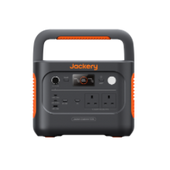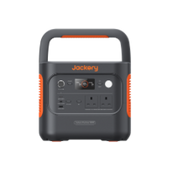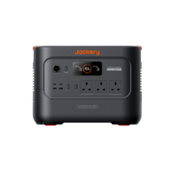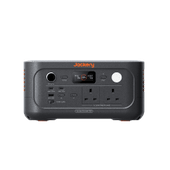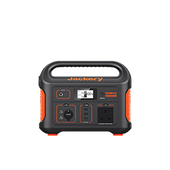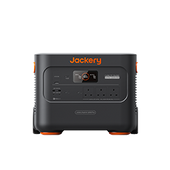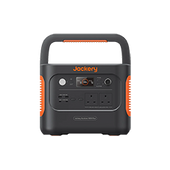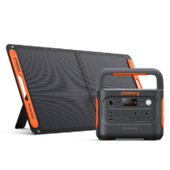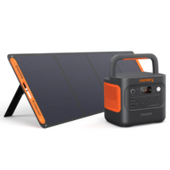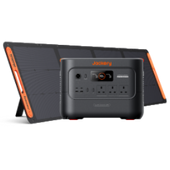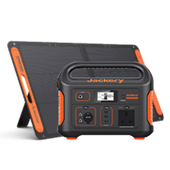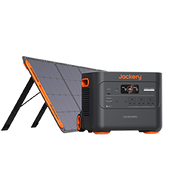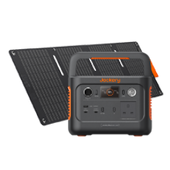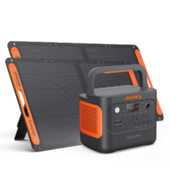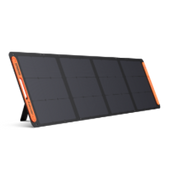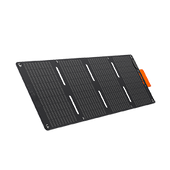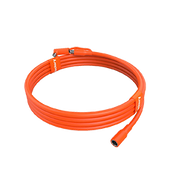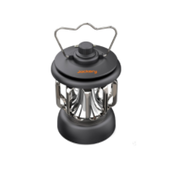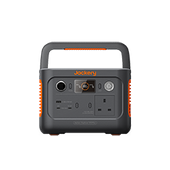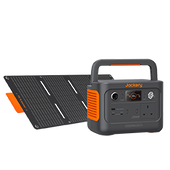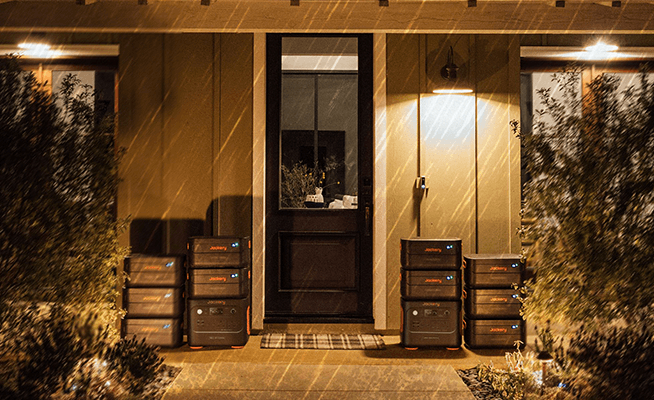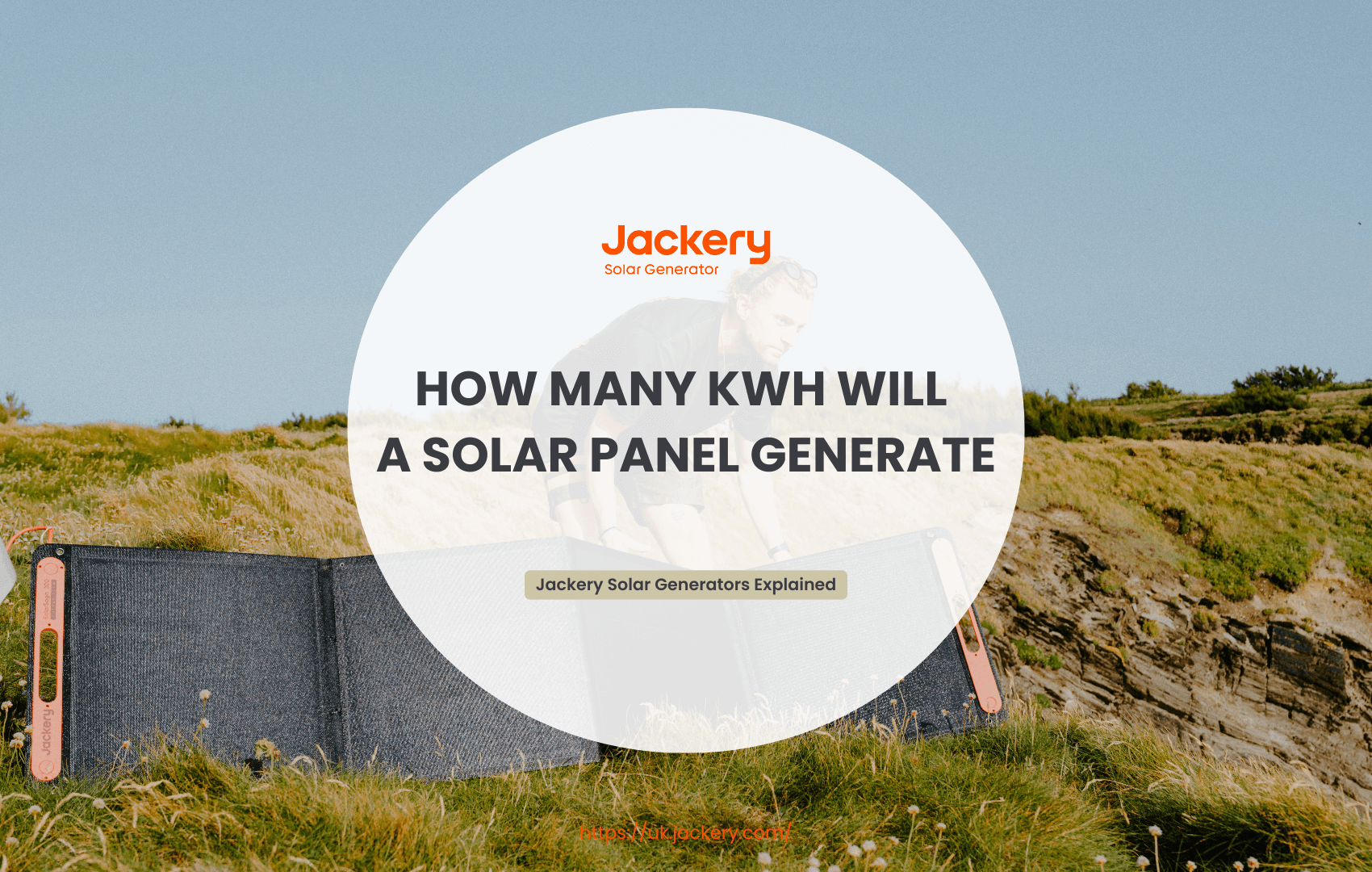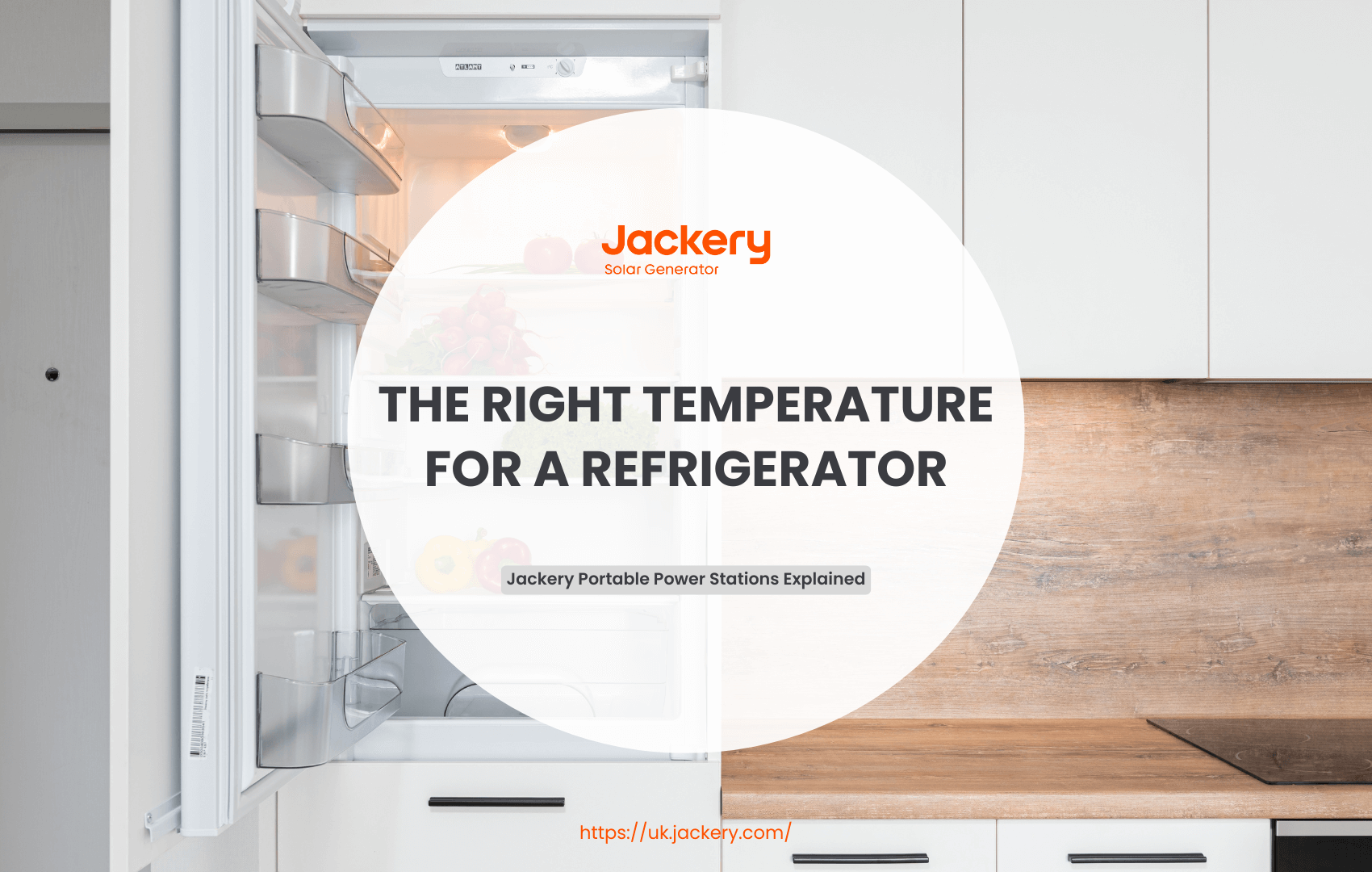If you are considering adopting solar energy but are unsure whether it will suit your energy needs, research and understand it well. The first thing to evaluate and understand is how many kWh a solar panel will generate. Furthermore, considerable emphasis is placed on enhancing the efficiency solar panels generate electricity.
This blog aims to provide more information about how many kWh a solar panel generates, a step-by-step calculation method, an examination of the factors that influence it, and advice on what to do with the excess electricity it generates. Besides, we highly recommend the Jackery Solar Generator, which combines a Jackery Portable Power Station with Jackery Solar Panels to turn sunlight into electricity for home and outdoor uses.
|
Key Takeaways: |
|
How Many kWh Will a Solar Panel Generate?
Solar panels are made of semiconductor materials called solar cells, which convert sunlight into electrical energy. When these charges move, they generate direct current electricity. Now that you know how this works, it's time to explore how many kWh a solar panel will generate. When considering a solar power system for your home, it's essential to understand how much electricity a solar panel can generate.
What Is kWh?
Before we discuss how many kWh a solar panel will produce, it is crucial to define kWh. A kWh is a unit of energy used to calculate the use or generation of electricity.
For example, when you look at your power account, the amount charged is usually determined by how many kWh you've consumed. Similarly, when a solar panel creates electricity, its energy is measured in kWh. Under ideal conditions, a 300W solar panel will provide 1.5kWh of electricity after five hours of operation.
How Many kWh Will a Solar Panel Generate?
Most domestic solar panels in the UK are between 250 and 400 watts. The "watt" refers to the amount of electricity a solar panel is expected to generate under ideal lighting, temperature, and other conditions. This means that under perfect conditions, a solar panel with power between 250W and 400W can generate 0.25 to 0.4 kWh of electricity per hour.
Taking the average, the power of the solar panels commonly used in most homes in the UK is 350W. Theoretically, a solar panel with a power of 350W may generate 0.35 kWh of electricity per hour under optimal conditions, up to 1.4 to 1.75 kWh of electricity per day. Of course, this figure is based on the assumption that the solar panel operates under optimal conditions. This is an overly optimistic view. In fact, in the UK, where sunlight is scarce, solar panels have little chance of generating electricity under optimal conditions.
A solar panel (average power: 350W) can generate about 265 kWh of electricity annually, equivalent to about 0.7 kWh daily. (Data Source: Renewableenergyhub)
|
Power Generation Time |
Average Power Generation (kWh) |
|
Daily |
0.7 |
|
Weekly |
5 |
|
Monthly |
22 |
|
Yearly |
265 |
This table is an average value estimated based on the average power of solar panels (350W) and is for reference only.

How Can You Calculate How Much Electricity a Solar Panel Can Generate?
Now you know the average daily power output and electricity generated by a solar panel. You can go ahead and dig deeper into how to calculate the energy yield of a specific solar panel you are considering for your home. If you want to know how many kWh a solar panel will generate, follow these steps to calculate a reliable estimate.
Step 1: Determine the Power Rating of Your Solar Panel
Each solar panel has a specific power rating, measured in watts (W). This power rating indicates the maximum power the solar panel can generate under ideal conditions. Most domestic solar panels in the UK have a power rating between 250 and 400 watts.
The power rating of your solar panel should be marked on the device itself and in the product manual. If using multiple solar panels, add their power ratings together. For example, two 250-watt solar panels can provide 500 watts of solar power under optimal conditions.
Step 2: Determine the Peak Sunshine Hours
The sunlight your location receives directly affects the amount of electricity your solar panels can generate. Peak sunshine hours are the hours of sunlight equivalent to standard sunshine during the day, which means the amount of time the sunlight is strong enough for the solar panel to use its rated power fully. The average peak sunshine hours vary significantly between regions in the UK. The average peak sunshine hours in the UK are around 3-4 hours daily.
Step 3: Calculate the Daily Energy Output of the Solar Panel
To calculate a solar panel's daily power generation, multiply its rated power by the peak sunshine hours.
The formula for calculating the daily energy output of a solar panel is relatively simple:
Solar panel power (kW) x peak sunshine hours (h) = daily energy output (kWh)
Example: If a 350-watt (0.35kW) solar panel is installed and it is expected to have approximately four peak sunshine hours a day, then this solar panel will generate 1.4kWh of electricity per day (0.35kW x 4h = 1.4kWh).
If you want to calculate the power generation of this solar panel in a year, you can multiply its daily output by 365. The solar panel in the example would then generate 511kWh of electricity in a year (1.4kWh x 365 = 511kWh).
This is a rough estimate of how much a solar panel would generate per day based on ideal conditions. In reality, no solar panel can operate at 100% efficiency and be unaffected by shading dust, and line inefficiencies.
For example, a 350-watt (0.35kW) solar panel in the example would generate an average of about 265 kWh per year, which is far less than 511kWh. Therefore, the electricity of a solar panel will be less than the estimate provided.
In summary, the best way to determine the amount of electricity a solar panel will generate is to consult a local, trusted solar installer who can consider all factors when calculating its electricity production.
What Factors Affect the Efficiency of Solar Panels?
While the local sunshine hours and the wattage of the solar panels significantly impact the amount of electricity they can generate, this is only part of the story. Various other factors also affect the actual amount of electricity they can generate.

Geographical Location
Solar panels in sunny areas generate more electricity than those in cloudy regions. For example, solar panels installed in sunny places in the southeast and southwest of the UK will create more electricity year-round.
Orientation
Solar panels are most efficient when facing the sun directly. In the northern hemisphere, solar panels face south. In the UK, south-facing roofs are ideal. Even if the roof is not facing due south, solar panels facing southwest or southeast can achieve about 85% to 90% of the potential energy output of solar panels facing south.
Solar Panel Efficiency
The efficiency of solar cells varies between different types and levels. Efficiency refers to the proportion of incident solar energy that a solar panel converts into usable electricity. Monocrystalline silicon panels are generally more efficient and suitable for smaller installation areas.
|
Solar Panel Types |
Efficiency |
|
19% - 22% |
|
|
Polycrystalline (or Multi-Crystalline) Solar Panels |
16% - 18% |
|
Amorphous/Thin Film Solar Panels |
10% - 13% |
This table shows an estimated range of efficiencies for different common types of solar panels.
Shade
Solar panels need direct sunlight to achieve optimal efficiency. A neighbouring chimney, a tree, a building, or clouds in the sky can significantly affect a solar panel's power output. Shading for part of the day can also reduce a solar panel's annual power generation by 10-30%.
Temperature
Solar panels use sunlight to generate electricity; however, extremely high temperatures can impair power generation performance. Solar panels perform best in chilly, bright circumstances, so the UK's moderate climate is highly beneficial. Most solar panels operate most efficiently at a typical temperature of 25°C. Their performance degrades marginally with each 1°C increase over this temperature.
Dirt
Dust, bird droppings, moss, fallen leaves, and other debris can block sunlight, causing solar panels to generate less electricity.
Tips for Maximising the Solar Panel's Power Generation Efficiency
Solar panels can never be 100% efficient. Therefore, you can only maximise the power output of solar panels and get more clean electricity. Here are some practical tips to help you maximise the efficiency of solar panel power generation:

Tip 1: Optimise Solar Panel Tilt and Orientation
In the UK, a tilt angle of 35 to 40 degrees is optimal for fixed installations to maximise solar exposure. However, the best tilt angle for solar panels will change throughout the year. For example, in spring and autumn, it is 45°, whereas in summer, it is 30°. Consider an adjustable mounting mechanism that can modify the tilt degree in response to seasonal fluctuations.
Tip 2: Install in a Location without Shade and Obstruction
Solar panels should be installed in areas with the most sunlight and avoided in places where trees or buildings block the sun. If it is impossible to avoid the shade of trees or buildings, installing a microinverter can help mitigate the effects of partial shade and maximise the output of solar panels.
Tip 3: Regular Cleaning and Maintenance
Keep solar panels clean by regularly removing dirt, debris and bird droppings that may block sunlight. Well-maintained, clean solar panels perform better than those covered in dust, producing about 15% more electricity. Homeowners should also regularly inspect solar panels for damage or issues that could affect performance and have them maintained and repaired.
Tip 4: Monitor Solar Panel Output
Using monitoring software to track the power output of your solar panels can help you detect any drop in efficiency early and optimise performance. This enables you to troubleshoot problems quickly and ensure your panels always perform at their best. For example, you can monitor power output over time by connecting your solar panels to energy management software like Surple.
Tip 5: Consider Upgrading Your Solar Panels
Upgrading your solar panels to newer, more efficient models can significantly improve performance. Modern solar panels have higher energy output and greater durability. For example, monocrystalline solar panels produce better power than polycrystalline solar panels.
What Should Be Done with the Excess Electricity Generated by Solar Panels?
What happens to the excess electricity when solar panels produce more energy than you consume? Don't worry about this unused solar energy going to waste. Today, excess electricity generated by solar panels will usually be exported and sold back to the grid, or if there is a battery, it will be stored until it is needed.
Method 1: Sell to the Grid
The UK government offers incentives such as the SEG, which allows homeowners to sell excess power back into the grid. If eligible, you can get compensation for returning unused energy to the grid by joining the SEG scheme through participating energy suppliers. Participating in the SEG system has various benefits, including more cash, lower energy costs, and contributing to the UK's stable grid by balancing electricity supply and demand.
Method 2: Invest in a Battery Storage System
Installing a battery energy storage system means that excess electricity can be stored to offset future electricity bills. For example, battery energy storage systems allow homeowners to store excess electricity at night, during winter, during power outages, and when there is less sunlight. This increases the solar system's efficiency and helps reduce dependence on the national grid. Some excellent battery storage system manufacturers are on the market, including Tesla Powerwall, SolarEdge, GiveEnergy, Enphase, MyEnergi, etc.
Suppose the price of solar panels and battery storage systems is too high. In that case, you can also buy a portable solar generator—for example, the Jackery Solar Generator 2000 Plus or the Jackery Solar Generator 1000 Plus.

If excess solar energy is not supplied to the grid or stored in batteries, it is effectively wasted. The above two methods can maximise the advantages of solar energy's potential while highlighting its energy cost savings and environmental benefits.
Jackery Solar Generators Explained
A Jackery Solar Generator is a complete system that combines a Jackery Portable Power Station with Jackery Solar Panels. This integrated approach offers several key advantages, particularly solar panel efficiency and electricity storage.
Jackery Solar Panels are made with monocrystalline silicon solar cells, a premium technology known for its high efficiency. Jackery SolarSaga panels typically have a solar conversion efficiency of around 25%. This leading figure for portable solar panels is competitive with many residential panels. A higher efficiency means the panels can convert more available sunlight into usable electricity, allowing you to generate more power in a smaller footprint and in less time.
Jackery Solar Generator 2000 Plus
The Jackery Solar Generator 2000 Plus is a comprehensive power solution that combines two essential components: the Jackery Explorer 2000 Plus portable power station and one or more Jackery SolarSaga 200W solar panels. This bundle provides a reliable, sustainable, scalable power source for various needs.
The Jackery Explorer 2000 Plus
The Explorer 2000 Plus is the system's core—the battery that stores and distributes power. It's a powerful and versatile portable power station focusing on high performance and expandability.
It has a substantial 2042.8Wh capacity and a continuous power output of 3000W (with a 6000W surge peak). It can handle various devices, including power-hungry kitchen appliances like microwaves and coffee makers, and essential items like refrigerators and power tools. The 2000 Plus is highly scalable, allowing you to add up to five additional battery packs. This can increase the total capacity from 2kWh to an impressive 12kWh, making it suitable for everything from a short camping trip to a multi-day home power outage.
It uses a safe and long-lasting LiFePO4 battery, which has a cycle life of 4000 cycles to 70%+ capacity. You can use and recharge the unit daily for many years before experiencing significant battery degradation. The power station has various outlets, including multiple AC, USB-A, USB-C (100W), and a car port to simultaneously charge or power numerous devices.
The Jackery SolarSaga 200W Solar Panel
With up to 25% conversion efficiency, the SolarSaga 200W is highly effective at capturing sunlight and converting it into electricity, even in low-light conditions. This means faster and more reliable charging.
The panel is foldable and lightweight, making it easy to set up and transport. Its durable, ETFE-laminated case protects against the elements, and it is IP68 waterproof, offering peace of mind in various weather conditions.
The panel is designed for seamless integration with the Jackery Explorer power stations, using a simple and secure connection. Multiple panels can be connected to the power station for even faster charging.

Jackery Solar Generator 1000 Plus
The Jackery Solar Generator 1000 Plus is a comprehensive power solution that pairs the Jackery Explorer 1000 Plus portable power station with one or more Jackery SolarSaga 100W solar panels. This system is a strategic decision for those needing a reliable, scalable, and efficient power source for off-grid use and home backup.
The Jackery Explorer 1000 Plus
The Explorer 1000 Plus is the heart of the system. It's where the electricity is stored and distributed, and its design is focused on power, longevity, and versatility.
It delivers a powerful 2000W of continuous power and a 4000W surge peak, a significant advantage over many other portable power stations. This high output allows it to run various kitchen appliances, power tools, and even small air conditioners, making it a versatile home backup solution.
The base unit has a capacity of 1264Wh, but you can add up to three additional battery packs. This expands the total capacity to 5kWh, providing enough power to run essential home appliances for several days during a power outage.
The Explorer 1000 Plus uses a LiFePO4 (Lithium Iron Phosphate) battery. It's rated for 4000 charge cycles before its capacity drops to 70%, which translates to a lifespan of about 10 years, even with daily use.
The power station has a built-in MPPT (Maximum Power Point Tracking) charge controller, which optimises the power coming from the solar panels to ensure the battery charges as efficiently as possible. It can also be fully charged from a wall outlet in just 100 minutes, providing a quick turnaround time.
The Jackery SolarSaga 100W Solar Panel
The panel features monocrystalline silicon solar cells and a high conversion efficiency of up to 25%. This means it can convert more of the sun's energy into electricity, allowing faster charging and better performance even on partly cloudy days.
The SolarSaga 100W is a lightweight, foldable panel with an IP68 waterproof rating, making it ideal for outdoor use. Its durable ETFE-laminated case protects it from the elements, and the adjustable kickstands allow you to position it at the optimal angle to the sun to maximise power capture.

FAQs
The following are frequently asked questions about how many kWh a solar panel will generate.
1. How many kWh does a solar panel generate per hour?
The quantity of power a solar panel generates per hour is determined by various factors, including the panel's wattage and the intensity of sunshine. A 400-watt solar panel can produce 400 watt-hours of solar energy in ideal conditions. However, reaching full power is nearly impossible due to sunlight intensity and solar panel efficiency.
2. How many kWh of electricity does a 100W solar panel generate per day?
A 100-watt solar panel usually generates 0.3 to 0.6 kWh of daily electricity. However, the sunlight it receives determines how much electricity it generates. For example, in an area with peak sunlight duration of 4 to 5 hours, a 100W solar panel can be expected to create about 0.4 kWh of electricity per day.
3. How many kWh of electricity does a solar panel generate in a month? How many kWh of electricity does it generate in a year?
Assuming a 400-watt solar panel is exposed to sunlight for 4 hours daily, it can generate about 1.6 kWh of electricity. To estimate how many kWh it produces monthly, multiply the daily output by 30. This solar panel will generate about 48 kWh per month. To calculate how much it will develop in a year, multiply the daily production by 365. This solar panel will generate about 584 kWh per year.
4. What are the benefits of storing excess solar energy produced by solar panels?
Excess solar energy produced by solar panels can power your home during peak hours when electricity costs are much higher. It can also help you break free from dependence on high energy bills and achieve independence. You can even get paid to send excess electricity back to the grid through schemes such as the SEG. If excess solar energy is not stored, it means wasted energy.
Final Thoughts
In conclusion, solar power systems are becoming an increasingly popular and environmentally friendly solution to meet people's daily energy needs. But how many kWh will a solar panel generate? If you want to estimate the power generation of a solar panel, multiply its rated power by the peak sunshine hours.
However, please remember that many other elements, such as geographical location, orientation, shading, temperature, and so on, will impact a solar panel's power generation. As a result, if you want to know how much power a solar panel generates, consult your local installer.



